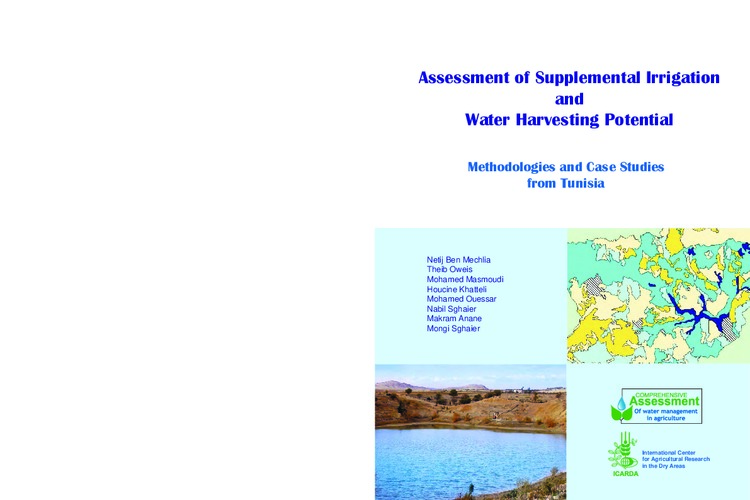Ruilverkaveling Zundert: bodemgesteldheid en bodemgeschiktheid
Onderzoek naar de bodemgesteldheid van het toekomstige ruilverkavelingsgebied Zundert. De gronden werden met deze gegevens beoordeeld op hun geschiktheid voor weidebouw, boomkwekerijgewassen en aardbeien, in de huidige toestand en na ingreep
Ruilverkaveling Alphen en Riel : bodemgesteldheid en bodemgeschiktheid
Land evaluation and farming systems analysis for Land Use Planning.
De bodemgesteldheid en bodemgeschiktheid van het landinrichtingsgebied Amstelland
Multi-scale characterization of inland valley agro-ecosystems in West Africa.
Inland valleys are defined as the upper reaches of river systems. These include valley bottoms and minor floodplains,their hydromorphic fringes and upland slopes and crests. These occupy 22-52 million ha of land in W. Africa and although of good agricultural potential are only marginally used. An agro-ecological characterization developed in the Cte d'Ivoire, is outlined on 4 levels: macro (1:1 000 000-1:5 000 000), reconnaissance (1:100 000-1:250 000), semi-detailed (1:25 000-1:50 000) and detailed (1:5000-10 000).
Assessment of Supplemental Irrigation and Water Harvesting Potential: Methodologies and Case Studies from Tunisia
An innovative, low-cost methodology was developed to assess the potential of sites in Tunisia for supplemental irrigation and water harvesting. The methodology, which uses commonly available technologies and information such as remote sensing and a Digital Elevation Model (DEM), was developed and tested using newly constructed hill reservoirs (used to capture surface runoff) and traditional water harvesting systems.
Land suitability evaluation for agriculture around Timau area - Heru District
A study was conducted of about 8000 ha around Timau area
in Meru District to evaluate its land suitability for
agriculture. A semi detailed soil survey was carried out to
classify and map the different soil units. Based on the
relevant land qualities of each Soil Unit and physiography
they were seperated in 15 Soil Mapping Units for the various
Land Utilization Types with land use recommendations given.
The following land qualities were rated and used to assess the
suitability of each Soil Mapping Unit: soil water retention,
Effect of climate change on land suitability for surface irrigation and irrigation potential of the shallow groundwater in Ghana
Estimating the potential land resources suitable for irrigation and evaluating the possible impact of climate change on land suitability is essential for planning a sustainable agricultural system. This study applied a GIS-based Multi-Criteria Evaluation (MCE) technique to evaluate the suitability of land for irrigation in Ghana for a baseline period (1990 to 2010) and future time horizons 2050s (2041 to 2060) and 2070s (2061 to 2080).
Assessing potential land suitable for surface irrigation using groundwater in Ethiopia
Although Ethiopia has abundant land for irrigation, only a fraction of its potential land is being utilized. This study evaluates suitability of lands for irrigation using groundwater in Ethiopia using GIS-based Multi-Criteria Evaluation (MCE) techniques in order to enhance the country's agricultural industry. Key factors that significantly affect irrigation suitability evaluated in this study include physical land features (land use, soil, and slope), climate (rainfall and evapotranspiration), and market access (proximity to roads and access to market).
Assessing land suitability for aquifer storage and recharge in northern Ghana using remote sensing and GIS multi-criteria decision analysis technique
Increasing climate variability and challenge in access to water pose major impediments to rainfed agricultural productivity. Extensive flooding of agricultural lands during the rainy season and lack of water during the 8-month long dry season affect the livelihood of the people in the northern Ghana, a situation that calls for better water management practices. The use of aquifer storage and recharge (ASR) based technique, helps to reduce flooding and improve access to water during the dry season; however such technology has specific requirements for successful implementation.




